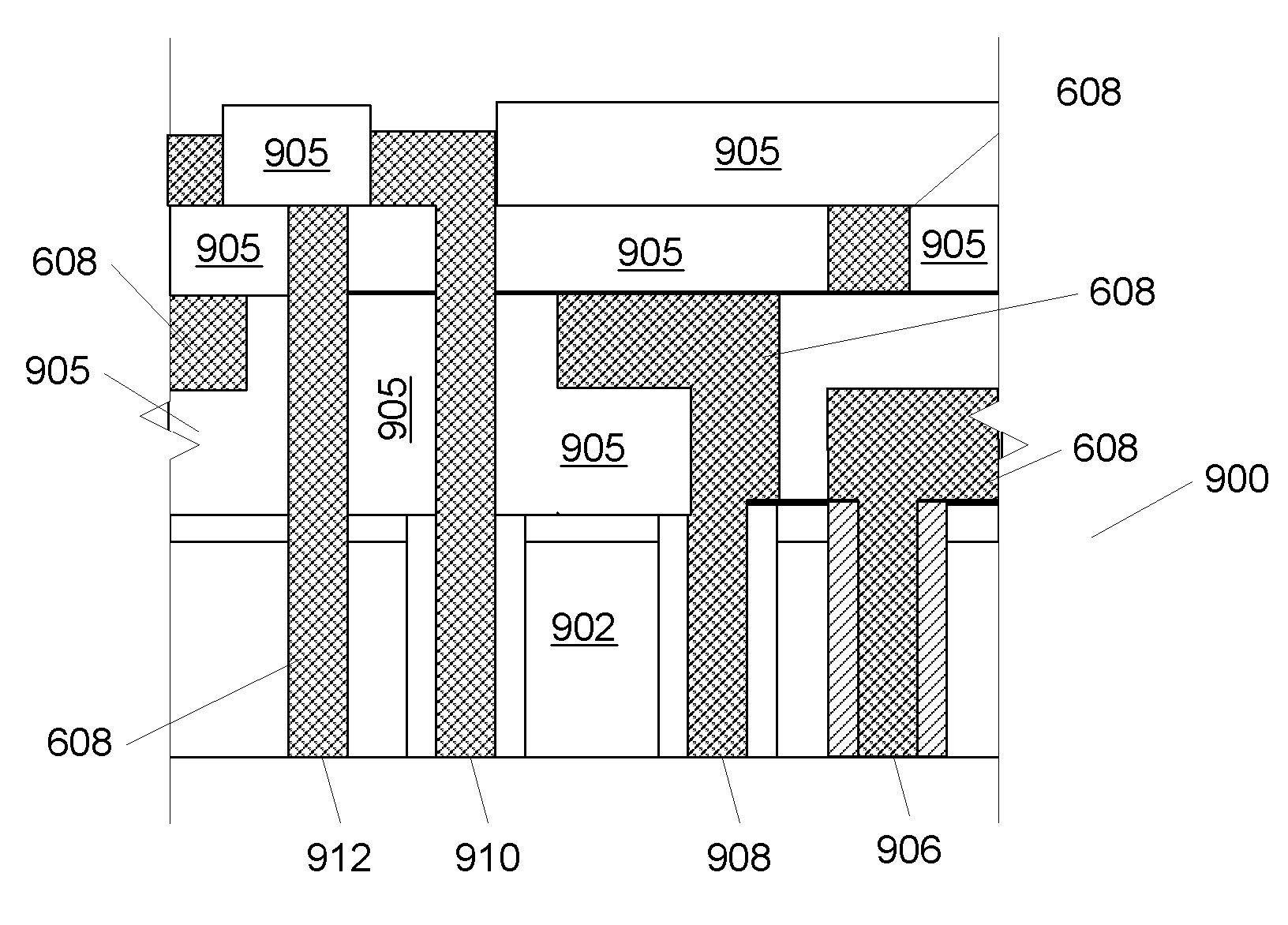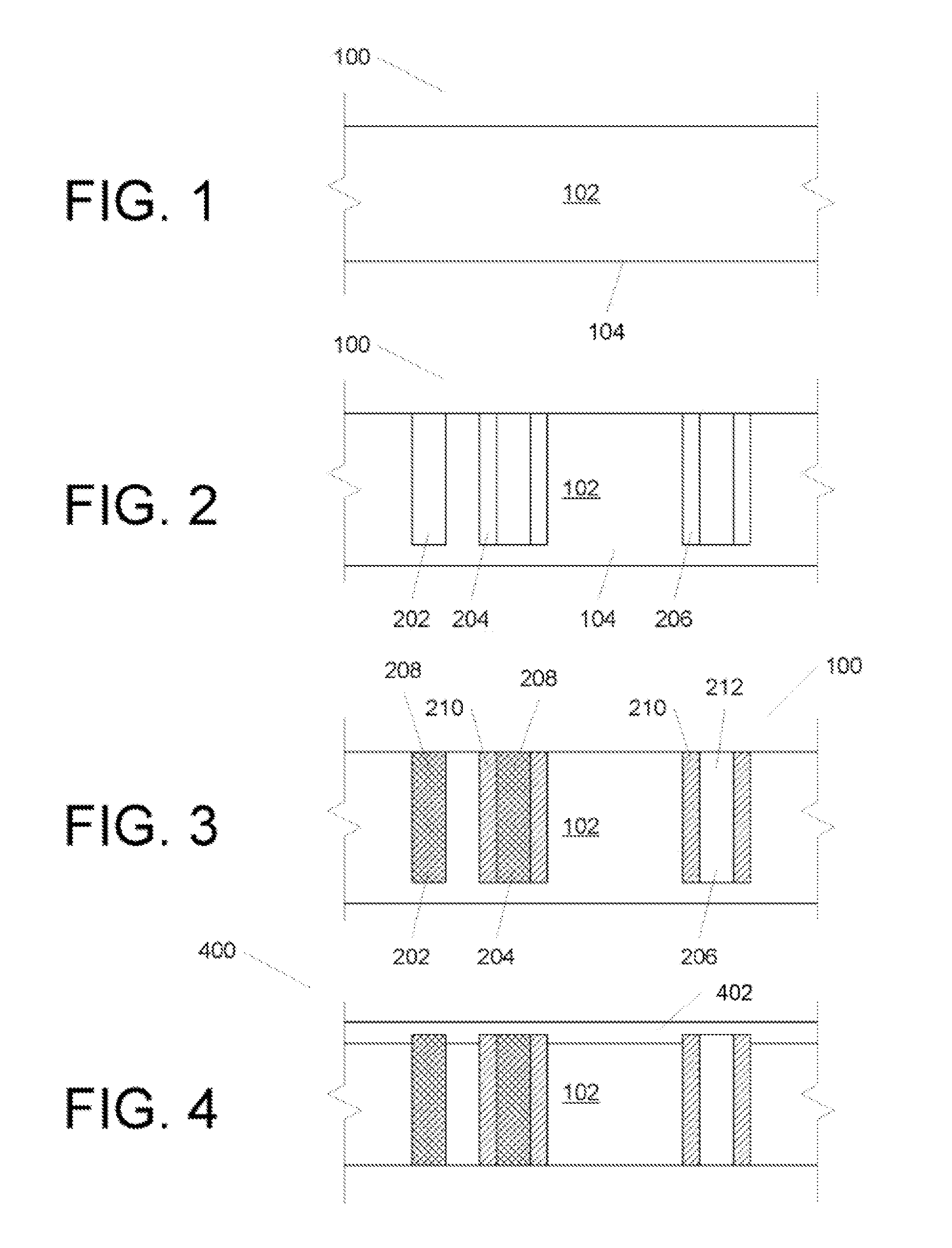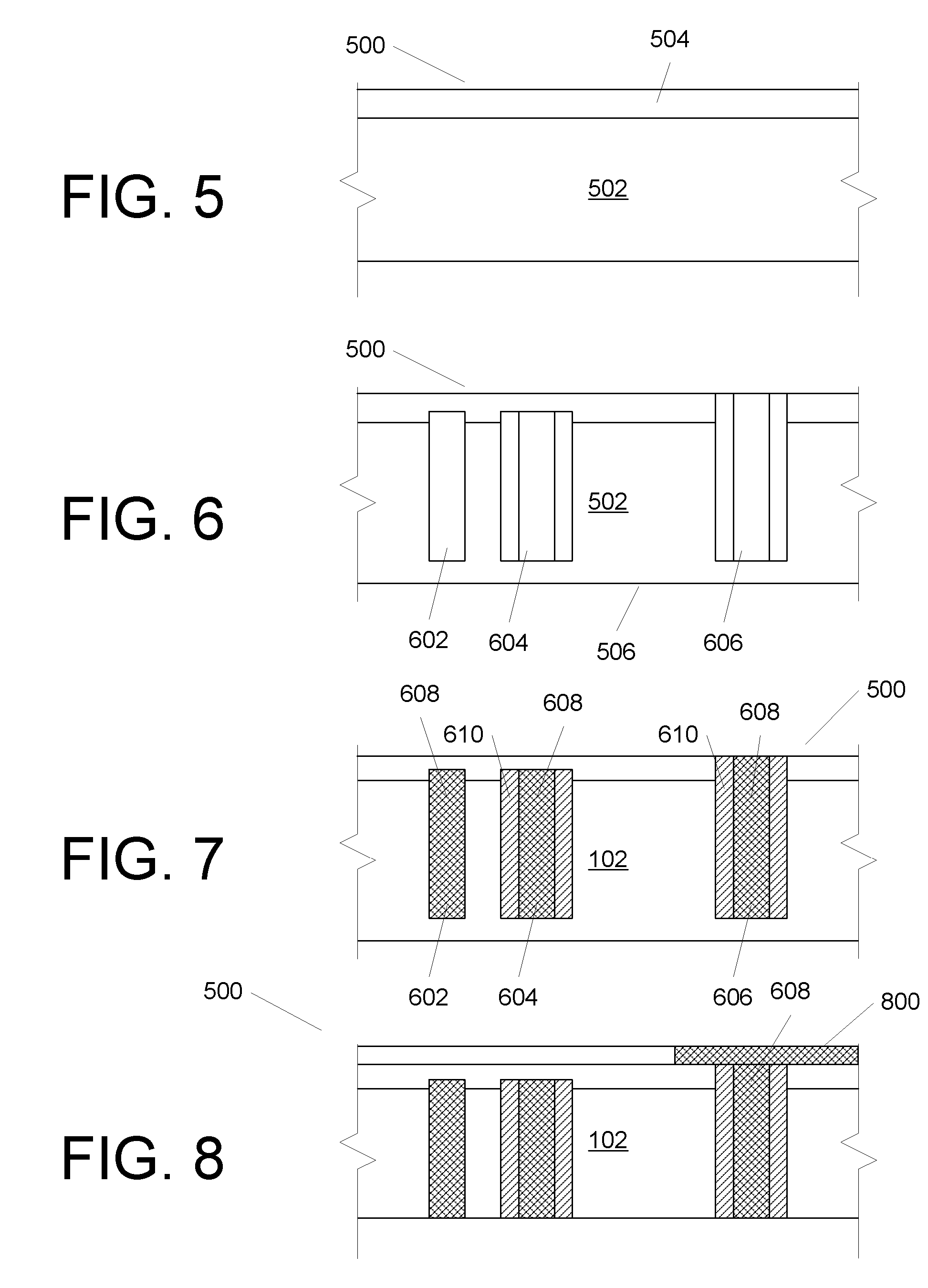Front-end processed wafer having through-chip connections
a technology of through-chip connections and processed wafers, which is applied in the field of semiconductor/solid-state device testing/measurement, individual semiconductor device testing, instruments, etc., can solve the problem that the back end processing for adding metal interconnect layers has not been completed, and achieve the effect of reducing risk and cos
- Summary
- Abstract
- Description
- Claims
- Application Information
AI Technical Summary
Benefits of technology
Problems solved by technology
Method used
Image
Examples
Embodiment Construction
[0019]U.S. patent application Ser. Nos. 11 / 329,481, 11 / 329,506, 11 / 329,539, 11 / 329,540, 11 / 329,556, 11 / 329,557, 11 / 329,558, 11 / 329,574, 11 / 329,575, 11 / 329,576, 11 / 329,873, 11 / 329,874, 11 / 329,875, 11 / 329,883, 11 / 329,885, 11 / 329,886, 11 / 329,887, 11 / 329,952, 11 / 329,953, 11 / 329,955, 11 / 330,011, 11 / 556,747 and 11 / 422,551, incorporated herein by reference describe various techniques for forming small, deep vias in, and electrical contacts for, semiconductor wafers. Our techniques allow for via densities and placement that was previously unachievable and can be performed on a chip or wafer scale.
[0020]In cases where it is desirable to create through-chip electrical connections, but minimize the risks involved with fully processed wafers (i.e. device bearing wafers), the following approach can be used.
[0021]In summary overview, the approach straightforwardly involves forming vias in a blank wafer at the locations where they should be relative to devices that would be on the wafer once front...
PUM
 Login to View More
Login to View More Abstract
Description
Claims
Application Information
 Login to View More
Login to View More - R&D
- Intellectual Property
- Life Sciences
- Materials
- Tech Scout
- Unparalleled Data Quality
- Higher Quality Content
- 60% Fewer Hallucinations
Browse by: Latest US Patents, China's latest patents, Technical Efficacy Thesaurus, Application Domain, Technology Topic, Popular Technical Reports.
© 2025 PatSnap. All rights reserved.Legal|Privacy policy|Modern Slavery Act Transparency Statement|Sitemap|About US| Contact US: help@patsnap.com



